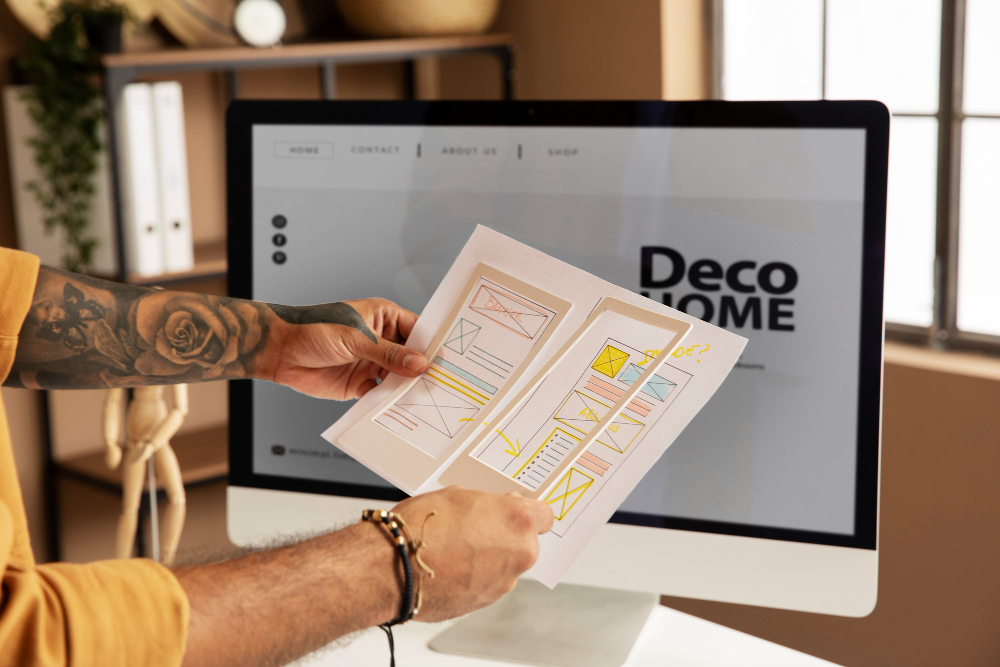4 Things to Consider Before Redesigning A Website
Starting a website makeover is a big step forward for your company’s digital marketing plan. These projects, sometimes large-scale undertakings, need significant time, money, and labour investment. It would help if you had a well-considered action plan, regardless of whether your redesign is motivated by a rebranding initiative or an urgent need to switch to a new tech stack.
Before starting a redesign, it’s essential to consider several aspects that will affect its success. This entails identifying the advantages and disadvantages of your present website, outlining the specifics of the redesign, establishing a reasonable budget that complements your company’s goals, and figuring out the ideal combination of resources and skill sets. Before beginning any work, every part of the redesign must be well thought out and prepared, whether it’s boosting user experience, boosting your brand’s online visibility, or keeping up with the newest technical developments.
In this article, we provide four ideas that a B2B website development agency should consider before beginning a redesign project to ensure that its investment produces efficient, long-term advantages for the company.
4 Pointers Before You Begin a B2B Website Makeover
Determine Your Business Goals
Any redesign given considerable thought should have specific commercial goals. First, identify your company’s objectives and include both business– and marketing-specific targets.
The following are a few examples of goals that might make your company eligible for a website redesign:
- Establishing a brand identity that is more recognizable, professional, or consistent
- Putting in place a more engaging, user-friendly, and contemporary website
- Increasing the scope of product and content marketing Initiatives
- Enhancing ties with clients or encouraging community involvement
- Increasing important website metrics, including engagement, conversions, and page views
Keep in mind that objectives have to be SMART (specific, measurable, attainable, relevant, and time-bound). This paradigm converts nebulous goals into concrete targets.
Evaluate Your Present Website
Determine which aspects of your present website –branding, user experience, content, or tech stack –need the most excellent attention. Discover which elements of your website are working best and how a redesign may improve them even more. Ensure that every website user has a chance to provide input on the present marketing website. The audit needs must include the outside presentation of the new website and its internal operations for the marketing team.
It would help if you asked yourself the following questions when you evaluate and compare your present website:
Create
- What aspects of your brand identity would you want to alter?
- What aspect of the design of the present website bothers you?
- Does your website have a responsive design? What is the website’s screen size on smaller devices?
Content
- Does the copywriting have your brand’s ideal tone of voice, and is it compelling?
- Are there any pages on the website that should be redesigned but still need to be added?
- Is your content search engine optimized? Are there any technical problems that need attention?
Analytical
- Which pages are the most useful to you? Which pages get the most traffic, views, and conversions?
- How do visitors utilize our website to navigate? Do any disconnects that make bounce rates too high?
- What positions do you currently have in organic searches? Which pages are you most interested in seeing grow?
Technology Stack
- How safe and quick is your website? How does it rank in terms of Google’s PageSpeed Insights?
- Are content editors finding the process enjoyable? Does your content management system have any problems?
- How scalable are the technologies used on websites today? Are you thinking about switching to a CMS or front-end with more performance?
Establish a Budget
Setting a reasonable budget is essential for both established businesses and fledgling ones. The extent of your redesign –whether a simple brand update or a comprehensive makeover –dramatically impacts the cost.
Depending on the size and funding of your company, take into account the following:
For Newer, Smaller Businesses
If your company is relatively young, keep in mind that a website is an investment rather than merely a cost. You are investing to increase brand equity and purchasing items that benefit KPIs. Depending on your budget and the condition of your present property, you’ll need to strike the correct balance between what’s realistic and your dreams. If required, use a staged approach, upgrading essential pages such as the contact, about, and homepage text.
For Medium-Sized Businesses
It might be easier for mid-sized companies to expand their online presence with the financial means of more prominent companies. Here, the emphasis must be on wise investments that provide long-term benefits. When it comes to the tech stack, this is very significant. If your front-end or content management system’s constraints limit your marketing team, it’s better to future-proof now rather than later having to cope with a significant revamp.
For Big Businesses
For bigger businesses, redesigning a website may be a complicated, multifaceted undertaking. Budgeting, in this case, must consider significant changes in branding and technology. Inviting a design system, a cutting-edge tech stack, and interfaces with other business processes might be essential. Allocate money carefully, ensuring each dollar goes toward quantifiable gains in productivity, user experience, and business results.
Select the Appropriate Materials
Selecting the ideal combination of skill and knowledge is just as important for a B2B website redesign as the redesign itself. Every choice has pros and cons of its own, whether you go with an agency, freelancers, or internal staff. This is an explanation:
Choosing an Agency Benefits:
- Expertise and Experience: Agencies often have extensive knowledge and a broad skill set, having worked on several projects, usually in the same sector.
- Resource Availability: They guarantee that every facet of your redesign is expertly managed since they have specialized design, development, and SEO teams.
- Scalability: Depending on the requirements of your project, agencies may quickly scale up or down their services.
- Creative Solutions: Agencies can provide innovative, tested solutions because they are exposed to various tasks.
Cons:
- Cost: Using in-house resources may sometimes be less costly than employing an agency.
- Less Control: You may only be able to influence some aspects of the project directly.
- Coordination with an outside team may sometimes need to be improved.
Conclusion
If you follow these four suggestions, your team will be more prepared to tackle a comprehensive website makeover. Check out our selection to see some of our best examples of B2B SaaS redesigns!

















